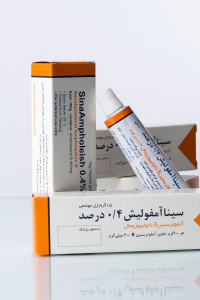| Exir Nano Sina |

| Catalog | 0.26 MB |
| Registration Date | 10 Feb 2016 |
| Revision Date | 19 Apr 2018 |
| Share |
Medicine Pharmaceuticals
DrugLiposome
NanoliposomeLiposomes are the most widely used antimicrobial drug delivery system. One of the distinguishing features of liposomes is its lipid bilayer structure, which mimics cell membranes and can readily fuse with infectious microbes. By directly fusing with bacterial membranes, the drug payloads of liposomes can be released to the cell membranes or the interior of the bacteria. Thus, using nanoliposomes for drug delivery reduces the treatment side effects and increases the transfer and penetration to the surface of fungi.
This product is 0.4% nanoliposomal amphotericin B topical gel produced for the treatment of cutaneous leishmaniasis and is topically applicable. Amphotericin B is an anti-parasitic and anti-fungal drug; effective for the treatment of cutaneous leishmaniasis. Due to renal toxicity caused by this drug, liposomal formulations can be used for targeted drug delivery. Liposomal formulations reduce the damaging effects of the drug on the body and increase the penetration and transfer to the fungus.Liposomes are the most widely used antimicrobial drug delivery system. One of the distinguishing features of liposomes is its lipid bilayer structure, which mimics cell membranes and can readily fuse with infectious microbes. By directly fusing with bacterial membranes, the drug payloads of liposomes can be released to the cell membranes or the interior of the bacteria. Thus, using nanoliposomes for drug delivery reduces the treatment side effects and increases the transfer and penetration to the surface of fungi.